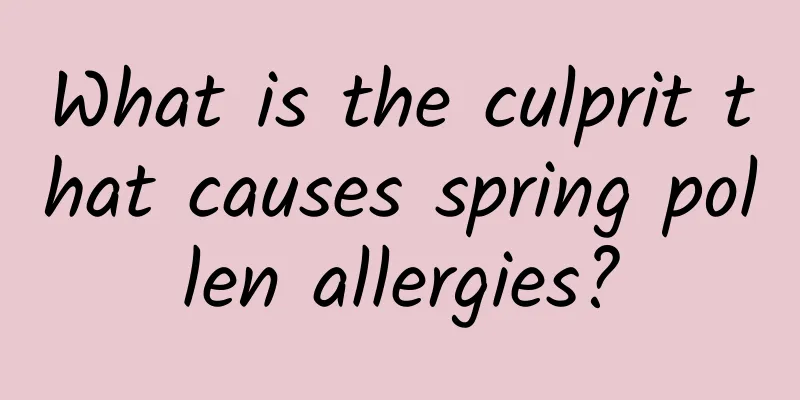What is the culprit that causes spring pollen allergies?

|
Every spring, many people suffer from pollen allergies. So what is the culprit that causes spring pollen allergies? According to experts, pollen transmission in nature mainly takes two forms: wind-borne and insect-borne. Insect-pollinated pollen, such as pollen from rapeseed, peach and pear flowers, is spread by insects such as butterflies and bees. It is characterized by bright flowers with fragrance or other odors, large pollen grains, small amounts of pollen, and is not easily spread, and usually does not cause allergies. Wind-borne pollen, such as pollen from cypress, poplar, willow, birch, sycamore, etc., is characterized by small flower shape, high pollen content, light weight, and can be blown to far places by the wind. Wind-borne pollen is the main allergen. Li Lisha, attending physician of the Department of Allergy of Peking Union Medical College Hospital: Some patients who are more sensitive may have symptoms in late February, but most patients will have more severe symptoms in late March. In March, the main pollen trees are cypress and willow, and in April and May, the main pollen trees are birch. There are also plane trees and ash trees, which may cause pollen allergies. Spring pollen allergy can cause a variety of adverse physical reactions Pollen allergy patients usually have skin symptoms and respiratory symptoms, and severe cases may even cause acute asthma attacks. So how can we help pollen allergy patients get through the pollen allergy season smoothly and healthily? Spring pollen allergy is a type of allergic reaction. After exposure to pollen, some patients experience eye symptoms such as itchy eyes, tearing, or conjunctival congestion, and may also experience photophobia. Wang Lianglu, chief physician of the Department of Allergy at Peking Union Medical College Hospital: There are some targeted preventive measures now, such as wearing masks and goggles during the pollen season. Goggles must be airtight and can completely seal the eyes. Experts say that allergic rhinitis is a common disease caused by pollen. Nasal congestion, itchy nose, runny nose, sneezing, and itchy eyes are the main symptoms of allergic rhinitis. Compared with colds, allergic rhinitis generally does not cause sore throat, fever, or other systemic discomfort. It usually lasts for more than 2 weeks, and patients with allergic rhinitis often develop the disease at a fixed time every year. At present, there is no way to completely cure allergic rhinitis, but early intervention can alleviate the patient's symptoms. Wang Lianglu, chief physician of the Department of Allergy at Peking Union Medical College Hospital: When you get up in the morning, you should first rinse your nasal cavity, then use nasal spray hormone, and then use pollen barrier. This can prolong and enhance the effect of nasal spray hormone, and play a good preventive and therapeutic role. |
<<: Be careful! Once infected with this virus, you will carry it for life
Recommend
Is it normal for pregnancy symptoms to disappear suddenly?
Presumably, many pregnant women have gone through...
Can pregnant women eat tofu pudding?
Pregnant women can eat more eggs in their diet, b...
Can abortion cause sweating?
Steaming is a way to relax the body that came fro...
What is the difference between an early pregnancy test and a pregnancy test stick?
Generally speaking, everyone knows that the most ...
Being physically strong does not necessarily mean being healthy. Do you know what mental health problems are?
Text: Liang Yuezhu, Beijing Anding Hospital Illus...
Can an alkaline constitution give birth to a boy? Is this really the case?
Favoring sons over daughters is a traditional feu...
Men, you must understand the pain of women
The picture is from the Internet (if there is any...
Why does my period come three times a month?
For women, the arrival of menstruation is a very ...
How to dice chicken breast? Calories of boiled chicken breast
Chicken breast is tender, delicious, and low in f...
The possible effects of bleeding clots during pregnancy
Becoming a mother is every girl's most beauti...
Why can't you eat cranberries during menstruation?
Menstruation is a special period of each month fo...
Talking about tourniquets in war movies
This is the 5174th article of Da Yi Xiao Hu Feng ...
Pregnant woman stretches unconsciously while sleeping
During pregnancy, women need to be very careful a...









